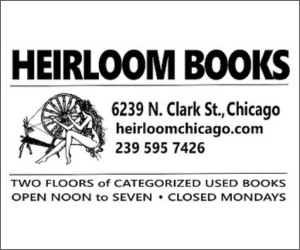Writer Michael Clausen responds to the Phoenix’s previous critique of Loyola’s neighborhood impact, discussing how there’s also a political side to Rogers Park’s gentrification.
Zoning Out and Moving In: Roger Park Property
Over the last few years, Loyola has made a series of controversial decisions, both in property purchases and future construction plans for the Lake Shore Campus. As argued in “A ‘Better Loyola’ is a Worse Rogers Park” from the Sept. 4th issue of the Phoenix, community members have aired major concerns these moves, especially the new campus plan, will speed gentrification in Rogers Park and strip away the character of one of Chicago’s most unique neighborhoods.
I don’t disagree — universities have a long history of fostering gentrification and displacement across America. Columbia University, for example, is famous for the gentrifying effects of its expansion into New York’s Harlem neighborhood, while the University of Chicago has come under fire for its ongoing “Lululemonification” of Hyde Park.
But despite valid concerns around new construction and demolition, it isn’t Loyola’s new campus plan driving up rents and displacement in Rogers Park. Loyola is a far cry from those other universities — where Columbia muscled in with court orders and UChicago built gentrification “dead zones” to keep the neighborhood out, Loyola and Rogers Park grew up deeply entwined from the start.
For almost a century, the neighborhood has been home to a mix of students and families, with both campus and community growing beside the lake. And then zoning laws boxed out its growth, capping new homes, freezing old ones and letting gentrification slowly force out residents.
As Loyola began to move into the neighborhood between 1906 and 1912, Rogers Park grew from a village of 3500 in 1900 into one of Chicago’s most diverse and vibrant neighborhoods. Two decades after the founding of Lake Shore Campus, Rogers Park grew to 40,000 residents. It now holds a community of 55,000 people – including many of Loyola’s 17,000 students. Loyola made Rogers Park and Rogers Park made Loyola.
While Loyola has made a series of recent moves which have rightly sparked fears of gentrification, there are clear differences between Loyola’s situation and those of other colleges — and evidence that shifts blame for Rogers Park’s rising rent prices away from the university.
As The Phoenix has frequently reported, Loyola has been on a purchasing spree, buying up local properties and fanning local backlash and real fears of neighborhood displacement. Problems have continued to arise from Loyola’s low communication approach to other community members prior to new acquisitions, even after the start of its recently-implemented Community Input Phase.
Loyola’s plans promise to highlight community-facing development, but schedules are on the scale of decades. In the meantime, the buildings slated for demolition are planned to be papered over with temporary empty green space, while the buildings promised to fill the holes left in the community remain unscheduled, and are likely far off.
This has created a wreck-now–build-later perception of Loyola’s new projects that’s hard to square with its promises of being a “community anchor” with a “local feel.”
Despite these fears, Loyola’s impact on rising rents and displacement in Chicago’s Far North Side is far less than university wrecking crews make it seem. Loyola’s property arm owns only about 550 housing units spread across the city — nothing to sneeze at, but a drop in the bucket compared to the 28,567 housing units in Rogers Park alone.
The real threat of gentrification is much harder to see: Chicago’s zoning laws.
Of the Rogers Park’s residential land, 28% is single-family zoned, restricting buildings to suburban-style housing coded as RS-1 and 2. The other 72% is zoned as multifamily — coded as RS-3 and RT-4 — but is only marginally more dense, mandating detached homes, two-flats and low-density apartments.
These codes dictate what can and can’t be built, effectively dictating who can and can’t live here. These four are the least dense allowed in Chicago, and make up all of the neighborhood’s residential zoning, with the exception of nine isolated lots zoned for more dense RM-5 or RM-6 buildings.
Mandating this type of single-unit and low density zoning is a recipe for disastrous displacement, especially in diverse mixed-income neighborhoods like Rogers Park, according to gentrification experts.
There’s nothing wrong with less dense homes, but locking down all residential land blocks the current needs of the neighborhood. Instead of being able to renovate a two-flat into a three-flat or a detached home into a new townhouse, buildings become frozen in time the minute they’re built.
With rules this strict, Chicago’s housing crisis — the main driver of displacement — is no surprise. Almost nothing can be built, either luxury or affordable, and the median housing unit now dates to 1942 — 82-years-old — meaning more than half of local homes and apartments date back to when Rogers Park had less than half its current population.
The effect? Higher rents for older, smaller housing lacking modern safety features.
The city knows these problems exist, and has worked to mandate affordable housing and prevent gentrification, with little effect. The 2021 Affordable Requirements Ordinance names Rogers Park as a “Community Preservation Area,” with specific affordability guidelines for new buildings, but the lack of zoning changes — and therefore the lack of new development — means few have been built and rents continue to creep upwards. At time of writing, Chicago’s housing deficit sits at 142,000 units.
Study after study show strong links between new homes, inclusionary zoning and lower rents, especially when combined with legislation like the anti-gentrification ordinance passed by the City Council last week, meant to keep housing both available and diverse.
University or not, the data shows housing supply sets prices, and zoning sets supply — whether it’s a new multifamily apartment or a post-suburban relic. From 1906 to now, there’s never been a reason for a “Better Loyola” to mean a worse Rogers Park — unless shortsighted zoning keeps us stuck in the past.











